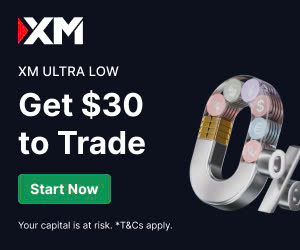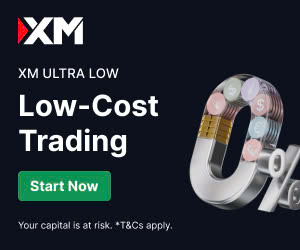
10 minute read
XM vs Olymp Trade: A Comprehensive Comparison
The online trading landscape is vast, with numerous brokers vying for traders’ attention. Among them, XM vs Olymp Trade stand out as popular choices for both novice and experienced traders. Each platform offers unique features, trading instruments, and user experiences, making the decision between them critical for anyone looking to succeed in forex, CFDs, or fixed-time trading. In this detailed comparison, we’ll dive into the key aspects of XM vs Olymp Trade, including their platforms, fees, regulation, account types, and more, to help you determine which broker aligns best with your trading goals. This article is crafted to provide unique content for readers seeking clarity on these two brokers.

💥 Trade with XM now: Open An Account or Visit Brokers 🏆
Overview of XM vs Olymp Trade
Before diving into the specifics, let’s establish a foundational understanding of each broker.
XM: A Forex and CFD Powerhouse
Founded in 2009, XM has grown into a globally recognized broker, serving over 5 million clients across 190 countries. XM specializes in forex and CFD trading, offering access to a wide range of markets, including currencies, commodities, indices, and stocks. Known for its robust educational resources, tight spreads, and reliable customer support, XM caters to traders of all experience levels. The broker operates under multiple regulatory bodies, enhancing its credibility in the trading community.
Olymp Trade: A Leader in Fixed-Time Trading
Established in 2014, Olymp Trade has carved a niche in fixed-time trading (FTT) and forex. With over 28 million accounts and a monthly trading volume exceeding $150 million, Olymp Trade appeals to traders who prefer shorter-term, high-risk trading strategies. The platform is user-friendly, particularly for beginners, and offers a variety of assets, including forex pairs, cryptocurrencies, and indices. Olymp Trade is regulated by the International Financial Commission (FinaCom), though its regulatory oversight is less stringent compared to XM.
Regulation and Trustworthiness
Regulation is a critical factor when choosing a broker, as it ensures the safety of your funds and fair trading practices.
XM’s Regulatory Framework
XM operates under several reputable regulatory bodies, including:
· Cyprus Securities and Exchange Commission (CySEC): A green-tier regulator ensuring high standards for EU clients.
· Australian Securities and Investments Commission (ASIC): Known for stringent oversight.
· Dubai Financial Services Authority (DFSA): A yellow-tier regulator for Middle Eastern clients.
· International Financial Services Commission (IFSC): A red-tier regulator for global clients, which is less robust but still provides some oversight.
XM’s multi-regulatory framework offers negative balance protection and segregates client funds, reducing the risk of loss due to broker insolvency. This makes XM a trusted choice for traders prioritizing security.
Olymp Trade’s Regulation
Olymp Trade is regulated by the International Financial Commission (FinaCom), an independent organization that provides up to €20,000 in compensation in case of broker insolvency. While FinaCom offers some protection, it is not as rigorous as tier-1 regulators like CySEC or ASIC. Additionally, Olymp Trade is based in Saint Vincent and the Grenadines, an offshore jurisdiction with less stringent financial oversight. This raises concerns for some traders, particularly those focused on long-term forex trading.
Verdict: XM’s stronger regulatory backing makes it the safer choice for traders prioritizing fund security. Olymp Trade, while operational for over a decade, lacks the same level of oversight, which may deter cautious investors.
Trading Platforms and Tools
The trading platform is the heart of any broker’s offering, impacting usability, speed, and functionality.
XM’s Trading Platforms
XM relies exclusively on the industry-standard MetaTrader 4 (MT4) and MetaTrader 5 (MT5) platforms, available on desktop, web, and mobile devices. These platforms are renowned for:
· Advanced Charting: Extensive technical indicators and customizable charts.
· Automated Trading: Support for Expert Advisors (EAs) for algorithmic trading.
· Speed and Reliability: 99.35% of orders are executed in under one second with no requotes or rejections.
However, XM does not offer a proprietary platform, which may disappoint traders seeking a more beginner-friendly interface. The XM mobile app includes exclusive copy trading features and crypto pairs like BTC/USD, but its technical analysis tools are limited compared to competitors.
Olymp Trade’s Trading Platform
Olymp Trade offers a proprietary web-based platform optimized for simplicity and speed, alongside MT4 for forex trading. Key features include:
· User-Friendly Interface: Ideal for beginners, with a clean design and intuitive navigation.
· Technical Indicators: A broad range of indicators for trend analysis, though some advanced tools are exclusive to Expert account holders.
· Sentiment Analysis: Unique “wisdom of the crowd” tools to gauge market sentiment.
The platform supports fixed-time trading, allowing traders to predict price movements within short timeframes (e.g., 60 seconds). However, its reliance on a proprietary system may limit customization for advanced traders accustomed to MT4/MT5’s flexibility.
Verdict: XM’s MT4/MT5 platforms are better suited for experienced traders needing advanced tools and automation. Olymp Trade’s proprietary platform excels for beginners and FTT enthusiasts but may feel restrictive for seasoned forex traders.
Account Types and Minimum Deposits
The variety of account types and entry barriers can significantly influence a trader’s choice.
XM Account Types
XM offers four main account types tailored to different trading styles:
· Micro Account: Ideal for beginners, with a $5 minimum deposit and micro-lot trading.
· Standard Account: A $5 minimum deposit with standard lot sizes for versatile trading.
· Ultra-Low Account: A $5 minimum deposit with ultra-tight spreads (from 0.6 pips).
· Zero Account: A $5 minimum deposit with spreads from 0.0 pips but a $3.5 commission per lot.
XM’s low minimum deposit makes it accessible to traders with limited capital. Additionally, proof of residence verification is not mandatory, simplifying the onboarding process.
Olymp Trade Account Types
Olymp Trade provides two primary account types:
· Standard Account: A $10 minimum deposit, suitable for beginners, with access to forex, FTT, and a $10,000 demo account.
· VIP Account: A $2,000 minimum deposit, offering lower spreads, exclusive tools, and priority support.
Olymp Trade’s low entry point for the Standard account is beginner-friendly, but the high deposit for the VIP account may deter casual traders. The demo account is a valuable feature for practicing strategies risk-free.
Verdict: XM offers more account variety and lower entry barriers, making it ideal for budget-conscious traders. Olymp Trade’s higher VIP deposit may limit its appeal, but its demo account is a strong starting point for novices.

💥 Trade with XM now: Open An Account or Visit Brokers 🏆
Fees and Spreads
Trading costs, including spreads and commissions, directly impact profitability.
XM’s Fees
XM is known for competitive pricing:
· Spreads: Start from 0.0 pips on the Zero account (with a $3.5 commission per lot) and 0.6 pips on the Ultra-Low account.
· No Non-Trading Fees: No charges for inactivity or withdrawals.
· Swap Fees: Applied for overnight positions, but swap-free accounts are available for Islamic traders.
XM’s transparent fee structure and low spreads make it cost-effective for high-frequency traders.
Olymp Trade’s Fees
Olymp Trade’s fee structure varies by trading type:
· Spreads: Variable spreads starting at 1.1 pips for forex trading on MT4. FTT does not involve spreads but relies on payout rates (up to 90% for correct predictions).
· Commissions: A fixed overnight commission (up to 15% of the investment) for forex positions.
· No Inactivity Fees: Similar to XM, Olymp Trade does not charge for dormant accounts.
Olymp Trade’s FTT model can be lucrative for correct predictions but carries higher risks due to its binary nature. Forex trading fees are less competitive than XM’s.
Verdict: XM offers lower and more predictable trading costs, especially for forex and CFDs. Olymp Trade’s FTT payouts are appealing but riskier, and its forex spreads are higher.
Trading Instruments
The range of assets available can influence a trader’s ability to diversify.
XM’s Instruments
XM provides over 1,000 markets, including:
· Forex: 55+ currency pairs.
· CFDs: Stocks, indices, commodities, and metals.
· Cryptocurrencies: Limited pairs like BTC/USD and ETH/USD, available only on the mobile app.
· Thematic Indices: Unique offerings for speculating on market trends.
While XM’s instrument range is diverse, it lags behind competitors like BlackBull (26,000+ instruments) and does not offer bonds or ETFs.
Olymp Trade’s Instruments
Olymp Trade supports a smaller but varied selection:
· Forex: 35 currency pairs.
· Fixed-Time Trading: Options on forex, cryptocurrencies, indices, and stocks.
· Other Assets: 12 cryptocurrencies, 10 indices, 4 metals, and 12 stocks.
Olymp Trade’s focus on FTT limits its asset diversity compared to XM, but its crypto and stock options are appealing for short-term traders.
Verdict: XM offers a broader range of instruments, ideal for diversified portfolios. Olymp Trade’s FTT focus caters to niche traders but lacks the same depth.
Educational Resources and Support
Education and customer support are vital for traders’ success, especially beginners.
XM’s Educational Offerings
XM excels in trader education, providing:
· Webinars and Seminars: Live sessions in 23 languages, covering basic to advanced strategies.
· Tutorials and Videos: Comprehensive guides on MT4/MT5, risk management, and technical analysis.
· Trading Central: Third-party technical analysis for short-term traders.
Customer support is available 24/7 via live chat, email, and phone, with a detailed FAQ section for quick answers.
Olymp Trade’s Educational Resources
Olymp Trade offers solid educational content, including:
· Blog and Videos: Articles and tutorials on technical analysis, money management, and FTT strategies.
· Demo Account: A $10,000 virtual account for practice.
· Market Insights: Sentiment analysis and trading signals, though some are exclusive to VIP accounts.
Support is available 24/7 via email and live chat, with responsive service but fewer contact options than XM.
Verdict: XM’s extensive educational resources and multilingual support make it superior for learning. Olymp Trade’s offerings are beginner-friendly but less comprehensive.
Pros and Cons
XM Pros
· Regulated by CySEC, ASIC, and DFSA for enhanced security.
· Low minimum deposit ($5) and multiple account types.
· Competitive spreads and no non-trading fees.
· Extensive educational resources and 24/7 support.
· MT4/MT5 platforms with fast execution.
XM Cons
· No proprietary platform; relies solely on MT4/MT5.
· Limited cryptocurrency offerings.
· No bonds or ETFs.
Olymp Trade Pros
· User-friendly platform ideal for beginners.
· Low minimum deposit ($10) for Standard account.
· Strong focus on fixed-time trading with high payout rates (up to 90%).
· Free demo account with $10,000 virtual funds.
· 24/7 customer support.
Olymp Trade Cons
· Weaker regulation (FinaCom) compared to XM.
· Higher forex spreads and overnight commissions.
· Limited asset diversity for long-term trading.
· Advanced tools restricted to VIP accounts.
Which Broker Should You Choose?
Choosing between XM vs Olymp Trade depends on your trading style, experience level, and priorities:
· Choose XM if:
· You prioritize regulatory safety and fund security.
· You’re interested in forex and CFD trading with low spreads.
· You want access to MT4/MT5 and extensive educational resources.
· You’re a beginner or advanced trader seeking flexibility and low entry barriers.
· Choose Olymp Trade if:
· You prefer fixed-time trading with high payout potential.
· You’re a beginner looking for a simple, intuitive platform.
· You want to practice with a demo account before committing funds.
· You’re comfortable with offshore regulation and shorter-term strategies.
Conclusion
XM vs Olymp Trade cater to different segments of the trading community. XM is a versatile, well-regulated broker ideal for forex and CFD traders seeking low costs, advanced platforms, and robust education. Olymp Trade, with its focus on fixed-time trading and beginner-friendly interface, appeals to those comfortable with higher risks and shorter timeframes. By weighing factors like regulation, fees, platforms, and asset variety, you can make an informed decision that aligns with your trading goals.
💥 Note: To enjoy the benefits of the partner code, such as trading fee rebates, you need to register with XM through this link: Open An Account or Visit Brokers 🏆
Read more:




